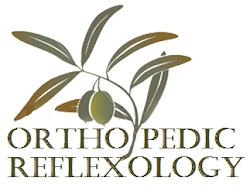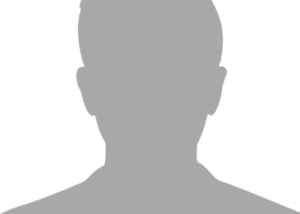
Orthopedic Reflexology
27 Σεπτεμβρίου, 2024 @ 9:30 πμ - 4:30 μμ
Date: Friday 27th, Saturday 28th & Sunday 29th September 2024
Hours: 9:30am – 16:30pm
Fees: 430€
Early bird booking by 27/07/2024 offer price 350€
Natural Health Science, Pandrosou 31, Palaio Faliro
English
Orthopedic Reflexology training to international students in Athens Greece is back again!
This is a great opportunity to combine a vacation in Greece with one of the most popular and successful reflexology trainings offered at the moment.
The course will be held between 9:30am – 16:30pm so this will give you more than enough time for sightseeing in downtown Athens or to enjoy the Athens Riviera. During our 3 day course Spiros will be your host and his full attention will be at you the participants so as to accommodate your visit and make sure you get the most from your visit to Athens.
For those who wish small sightseeing tours will be organized and in general we will spend time together after the course and most likely with other Greek colleagues. (Admission fees to museums and meals are at the participant’s expense.)
At this time of the year many sports teams will be getting into playoff season, so it is most likely that we will have more than enough of them to practice on!
Included as a gift will be the “cup of greed of Pythagoras”, organic beeswax handmade by me and the OR training DVD!).
For persons who have already completed the OR training but wish to attend a 50% discount applies.
Coffee, tea, fresh fruits will be offered at the breaks and are included in the course fee.
For enquiries please or to book your place please contact: info@nhs.gr
ORTHOPEDIC REFLEXOLOGY
In the Orthopedic Reflexology approach, we learn in detail the anatomy of the lower limb. This means the bones of the foot, the intrinsic and extrinsic muscles of the foot, the arteries, veins and lymph vessels, the peripheral nerves of the feet, the ligaments and tendons.
We do this because, as Reflexologists, we apply various manual techniques to the feet in order to affect the reflexes there. Our techniques are not only superficial skin deep but can go deeper much deeper, right to the bone. A better understanding of the anatomical structures where our reflexes are embedded will enlighten us on choosing and applying correctly the most efficient techniques and finally doing an even better job.
Different manual techniques have different results, and up to date research is informing us of exactly that. Hippocrates in the 5th century BC seems to have been ahead of his time. This is because he wrote back then a specific paragraph describing the variety in manual techniques based on the amount of pressure applied and the duration of the application. Importantly he also wrote down for us the effect each application has on the tissues. And it is a definitive fact, that today’s research findings, agree with his from back then.
In Orthopedic Reflexology training, we learn and understand this paragraph, and we utilize it through our techniques on the intrinsic muscles and other structures in the feet, where the reflexes are embedded, where they exist.
In order for nature to heal everything must be in moderation which is best.
By utilizing the experience one has obtained in discriminating the reflex areas or the condition of the foot’s tissues and then applying the correct technique, the proper amount of pressure for the appropriate amount of time, to achieve the “medium” as taught by Hippocrates in order for nature to heal. Orthopedic Reflexology practitioners use the present condition of the tissues of the feet as a guide to proceed in applying our techniques. Anatomical charts to understand the reflexes, Dr. Fitzgerald’s zones, the Chinese meridians and fascial continuities, as well as to effectively work on the feet.
In Orthopedic Reflexology we also learn how to alleviate, complementary to standard care, a number of foot issues such as hallux valgus, plantar fasciitis and hammer toes, which in turn reflexively affect and help treat disorders found in other parts of the body.
Hippocrates describes in detail four main “veins” that are considered the forefather of the Chinese meridians. These veins or meridians have striking similarities with the modern therapeutic concept of myofascial chains which are continuous lines of connective tissue that run through the body. The Hippocratic veins will be outlined theoretically in detail and compared to Tom Myers myofascial chains and the Chinese meridians and approached practically until the knee and elbow respectively.
During this 3 day course attention is also given to understanding modern concepts of pain and the “science” behind Reflexology and utilizing this knowledge in our every day work. The history and origin of reflexology is also reviewed.
Please note – Orthopedic reflexology is open to all who wish to have a better understanding of the lower limb and Reflexology, and not only to Reflexologists. Upon completion of the course everyone will be able integrate the techniques learnt immediately into their practice.
In short…
– if you ever wanted to specialize in the lower limbs (anatomy physiology),
– if you ever wondered why what you already do with Reflexology is helpful,
– if you ever wonder why you are NOT helping,
– if you ever wanted to be introduced to the sphere of Greek medicine
This course is for you!
The majority of the course is focused on the practical applications of the Orthopedic Reflexology techniques. There are many structures in our feet and each one requires a unique technique.
Orthopedic Reflexology 3 Day Course
- Hippocrates and Galens guide on the effects of “rubbing” Anatripsis
- Anatomy of the foot
- ippocrates 4 pairs of Veins (meridians)
- Muscle chains/ Zones/ Chinese meridians/ Nerve pathways
- Orthopedic Reflexology Maps
- Hippocrates Holistic approach
- The ‘science’ behind reflexology
- Effective techniques for local foot problems such as hallux valgus and hammer toes
- Explain Pain-understanding the modern concepts
- Referenced Reflexology History – Why is this important for the outcome of your treatment and for our future as a profession?

